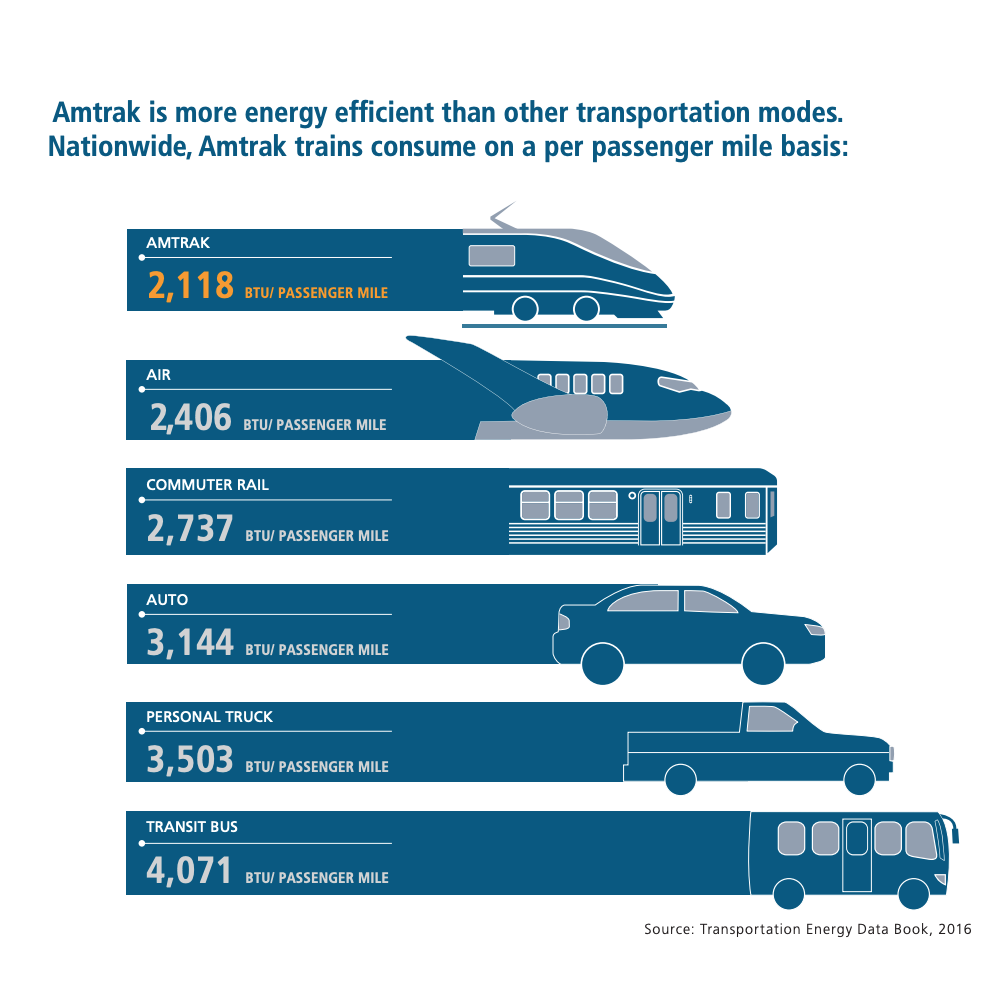For most families in America, travel by train isn’t part of the itinerary for their next vacation. Its not even on the radar as a possibility! But as urban cores are growing in population and a greater number of families are choosing to make a home and start a family near city centers, travel by rail is a logical and accessible option for family vacations. The biggest Amtrak stations are located in cities, travel by train can be a fun adventure, and the slower pace makes it ideal for traveling with kids.
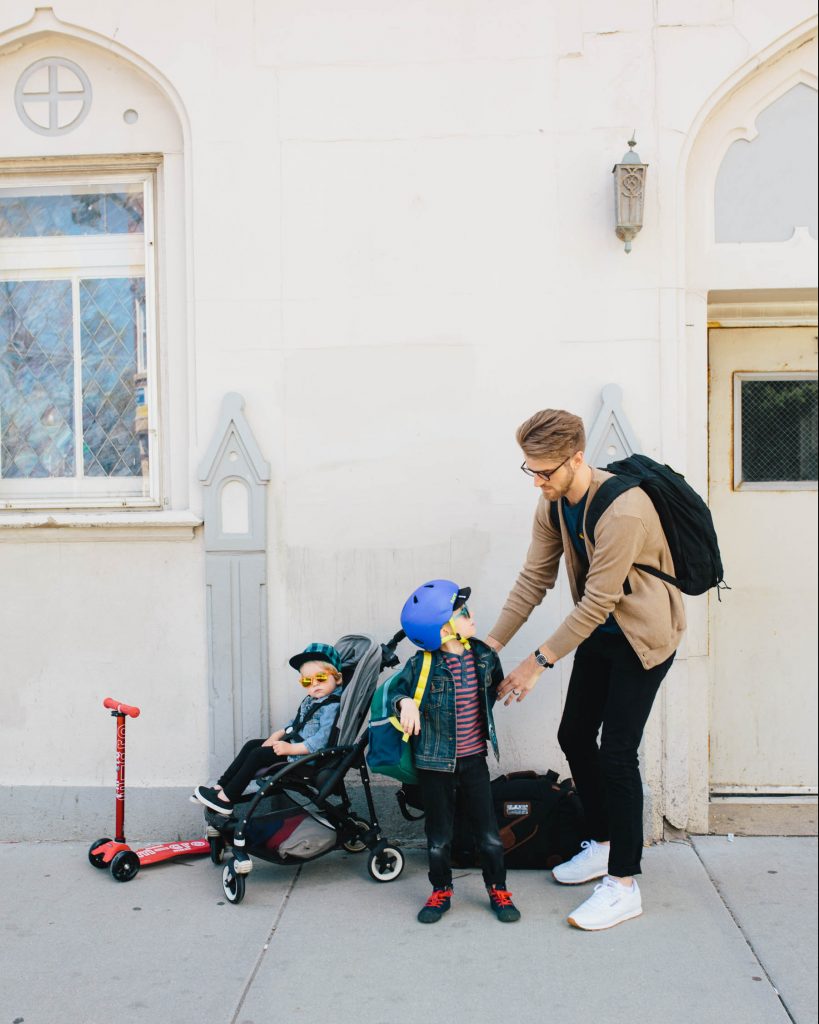
Since train travel hasn’t been the most popular mode of transportation for decades, information about what to expect and how exactly to make it all work is scarce. Especially when it comes to traveling with kids. How exactly do you board a giant passenger train? Are strollers allowed? Are snacks provided? Is the engine really loud? Will my kid sleep all night on a train? This handbook is our attempt to answer all those questions (well, except for the last one; we’re not magicians) and give rookie train-traveling families a guidebook of what to expect. We hope it inspires you to try new things with your family, even if taking a passenger train isn’t your cup of tea.
Why travel by train?
Although ridership on Amtrak trains has increased with each decade (clocking in at over 31 million in 2018) [1], it’s still not the primary long-distance travel option. Americans more often take trips by car or by plane (in 2018, 90% of all long-distance trips were taken by personal vehicle and 777 million people traveled on US airlines or US flights.) [1].
So why would city parents chose Amtrak to get from point A to point B?
For one, most Amtrak hubs are located in cities and they’re easily accessible by subway (no need to pay to park your car). Second, urban parents tend to be transit-loving, car-avoiding people, so taking a train to a nearby city for vacation seemed natural. Third, family adventures are fun, and train travel fits the bill as an exciting new experience. And lastly, train travel can be a more sustainable and environmentally-friendly option for vacation. A family car consumes more energy than an Amtrak train per passenger [2], and the trip itself can be hands-free (let the train engineer drive for you). But yes, we hear you. Traveling with kids is never truly hands-free. 😉
Urban, transit-preferring, sustainability-conscious millennial parents exist, and while we’re not economists, it seems like train travel has potential to service those kinds of families. That is, if rail companies would partner with Shake Shack or Lettuce Entertain You restaurant group to help them out on the food front. More on that later.
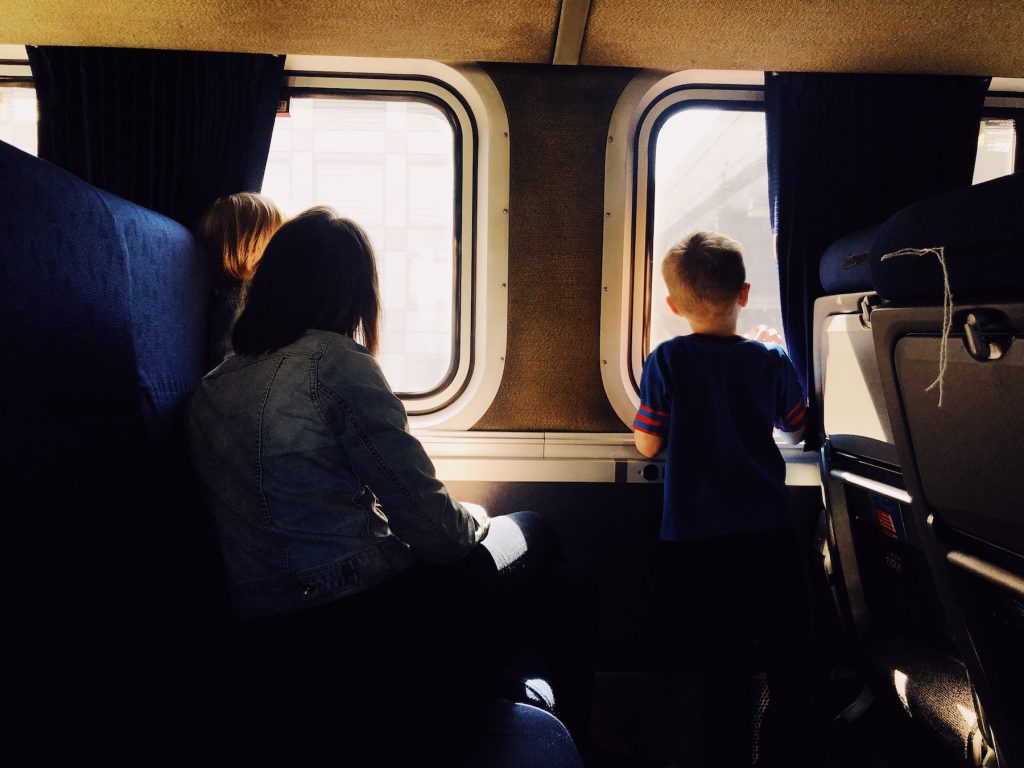
Here’s how your train trip begins.
Planning and tickets
Just like airfare, train tickets are cheaper when purchased in advance. We bought ours 4 weeks before while Amtrak was running a seasonal deal—we nabbed half-off child fares as part of their spring break promotional. Two round-trip adult tickets were $50 each and two child fare tickets were 50% off for a total of $150. A week before leaving, nearly every train from Chicago to St. Louis was booked! Ticket prices had increased by nearly 50%; buying early really is the way to go.
Four train tickets to St. Louis cost about the same as a single airline ticket, but train fare isn’t always cheaper. Longer train rides can cost more in time and money than airfare, so chose wisely.
Amtrak runs different trains on each route; some lines have more amenities and some have a more frequent (and presumably more reliable) schedules to and from each city. Before you book the first available or most inexpensive train you can find, check the schedule & timetables to see which lines are available on the day you wish to travel. Then read the details about each line to see if there’s one you would prefer over another.
For example, the route we took from Chicago to St. Louis is serviced by two train lines; the Lincoln Service and the Texas Eagle. Lincoln Service trains are on a 4-times-a-day schedule, travel no farther west than St. Louis, and contain only coach cars. The Texas Eagle runs every other day, begins in Chicago, ends in San Antonio, and connects to Los Angeles with scores of stops along the way. It includes coach, sleeper, dining, and lounge cars. We purchased tickets after deciding which train line we wanted for this trip (Texas Eagle) and planned our vacation around its timetable.
Packing and luggage
A packing list for taking the train isn’t much different than a packing list for any other trip: clothes, cosmetics, and activities for the ride. Restrictions against liquids and the size of your toothpaste tube aren’t as strict as airline travel, and you can also bring an insulated bag of picnic food and no one will bat an eye (we recommend it).
Carry on and checked baggage guidelines are also more lenient than airline travel. Checking a bag (or other large item like a bicycle) means it’s stowed for you in the baggage car and inaccessible. Don’t leave your extra diapers in there. Keep in mind that checked bag service isn’t available at every station; typically just the larger cities. Check to be sure your station can accommodate your checked bag before you pack those extra pairs of shoes.
There’s a remarkable amount of legroom in coach cars; plenty of extra space to bring a blanket for nap time and roll it underfoot once you no longer need it. There are outlets to plug in your electronics at every seat, and the lounge car also has plenty of places to plug in too. In other words, electronics welcome.
Arrival and boarding
At the station
Remove the security lines, put everything underground, take all the signage back in time about fifty years, and your city’s Amtrak station will feel a lot like your city’s airport. Train travel has been around for decades, and everything feels historic! If you’re lucky enough to live in a city that’s one of Amtrak’s major hubs, there’s a good chance your station (probably called Union Station) will be an architectural beauty.
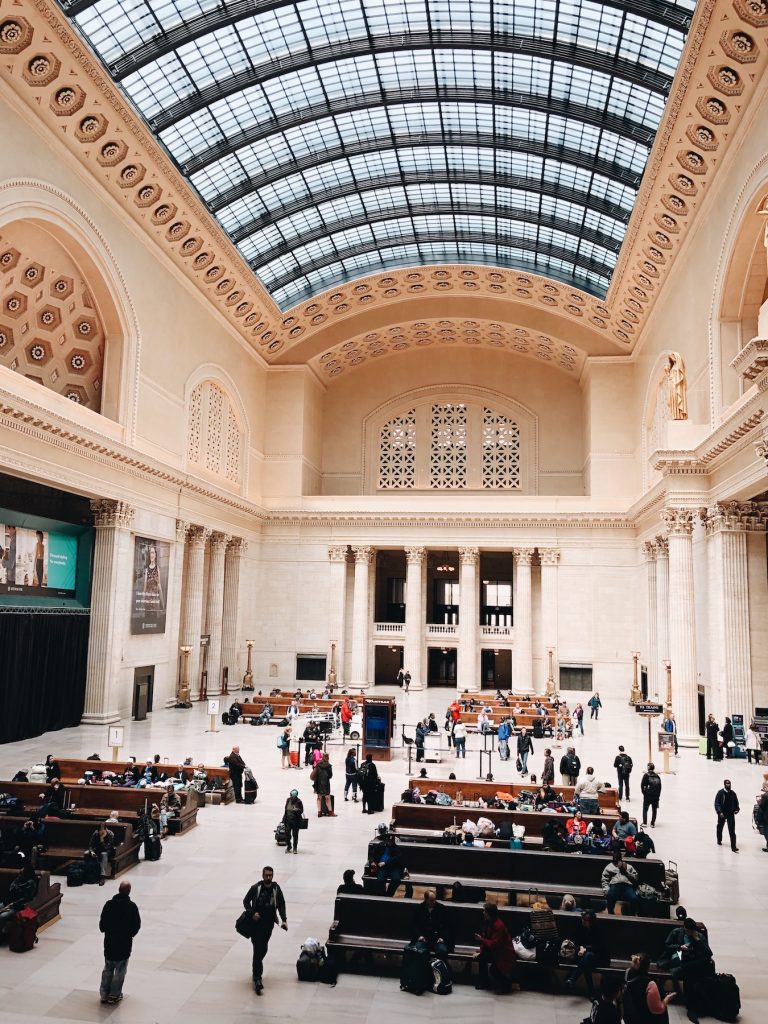
Amtrak recommends arriving at your station no less than 30 minutes before scheduled departure of your train, and we do too, especially for your first train trip. It’s much better to have extra time to kill at the station than rush to meet your train, so leave with plenty of time to spare.
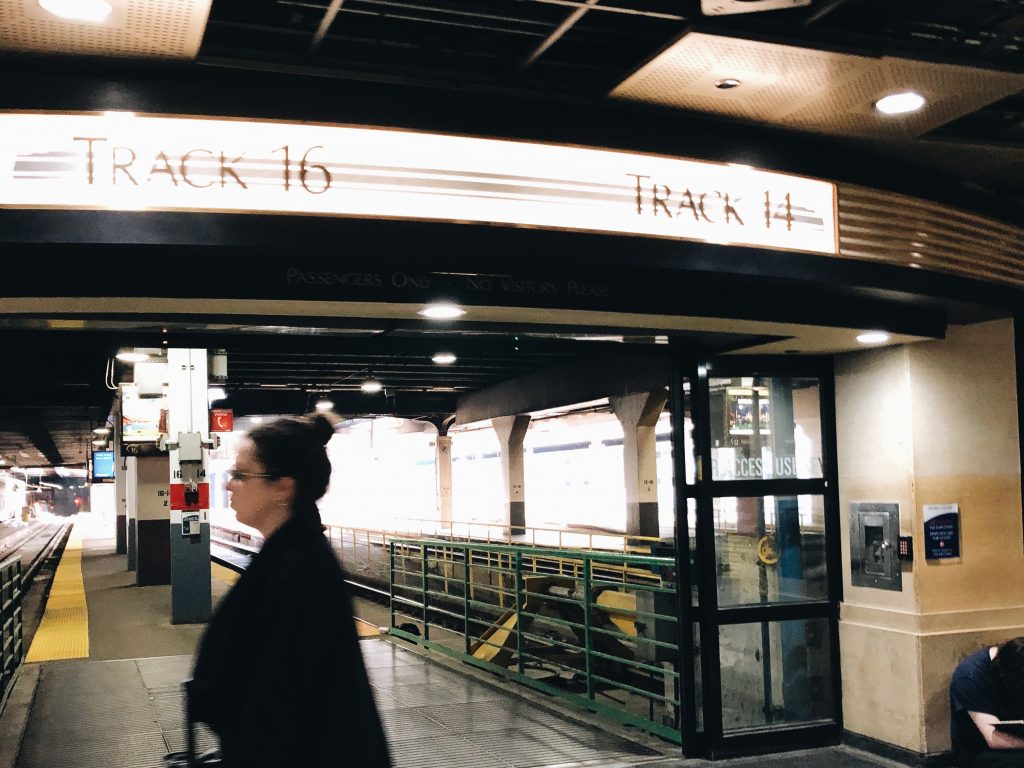
Find your train at the station much like you’d find your airline’s gate; by referencing your ticket and the monitors on the wall. Most stations delineate train tracks by number: track 12, 13, 14 and so on.
If you’re checking a bag, tag it with a luggage tag and then take it with you onto the train’s platform. You’ll be instructed to drop it off or stow it yourself in the baggage car before boarding the train. Carry strollers, scooters, and other kid gear with you—easily stow them with carry on bags.
Boarding the train
As early as an hour before departure, a line will begin to form at the track entrance. Boarding begins about 20 minutes before scheduled departure. Families and groups are normally granted early boarding—take advantage of the few extra minutes. It will be much easier to find neighboring seats (very few Amtrak lines have seat assignments) if you board the train before the rush of solo travelers.
Board the train by following an attendant down the platform to the train car they lead you to. At larger stations, an attendant will ask the size of your group and your final destination, then direct you to a specific car based on those details. (At some smaller stations, the doors on only a few cars open for disembarking as opposed to every train car at larger stations. The conductors and attendants know where to seat the passengers who are traveling to those stations to ensure they’re able to get off quickly.)
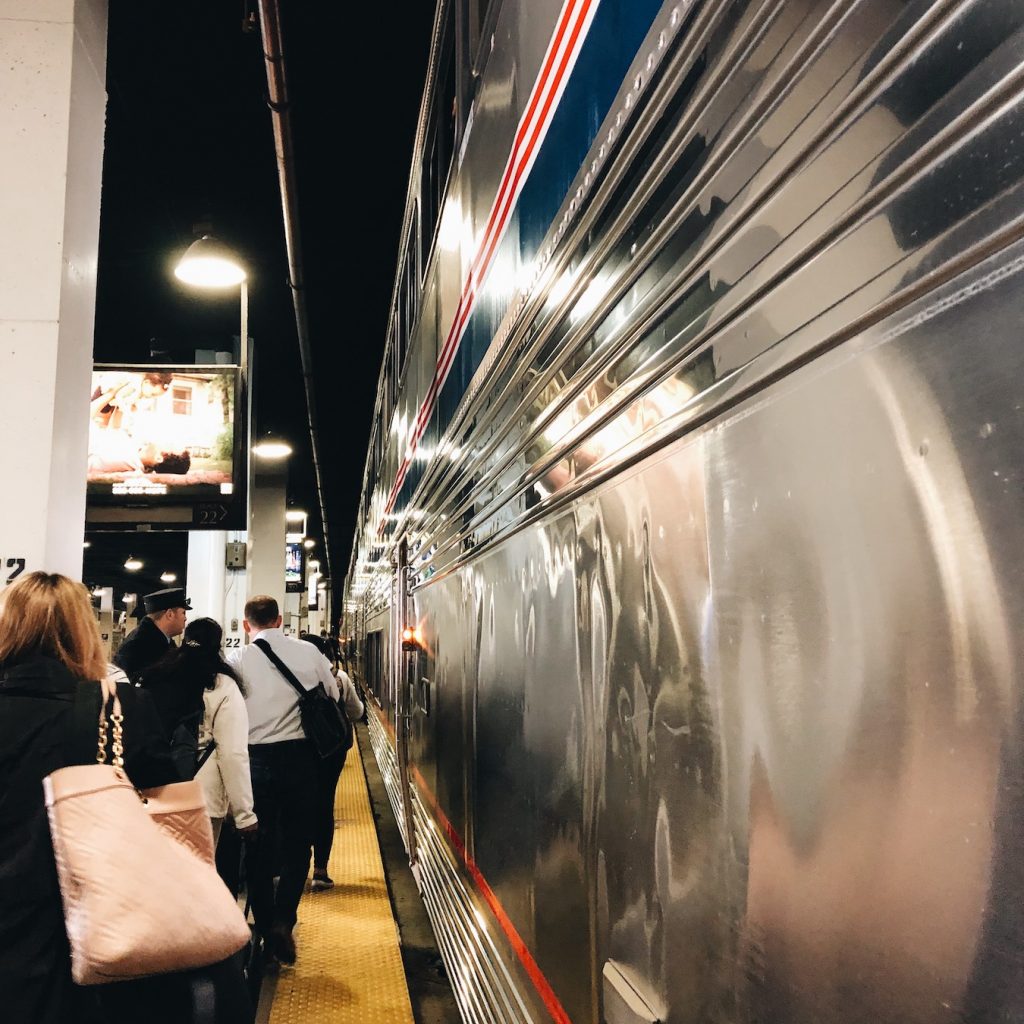
Once you step onto the train, turn the corner to find storage for larger carry-ons and strollers. If you’re traveling with valuables, lock your bags—this area is unattended and accessible to everyone. Stow your items (including strollers and scooters) and then proceed to the upper level of seating with your smaller personal-size bags. During the boarding process, doors between train cars are locked. If there aren’t enough adjacent seats for your whole family, ask a conductor for help finding seats together.
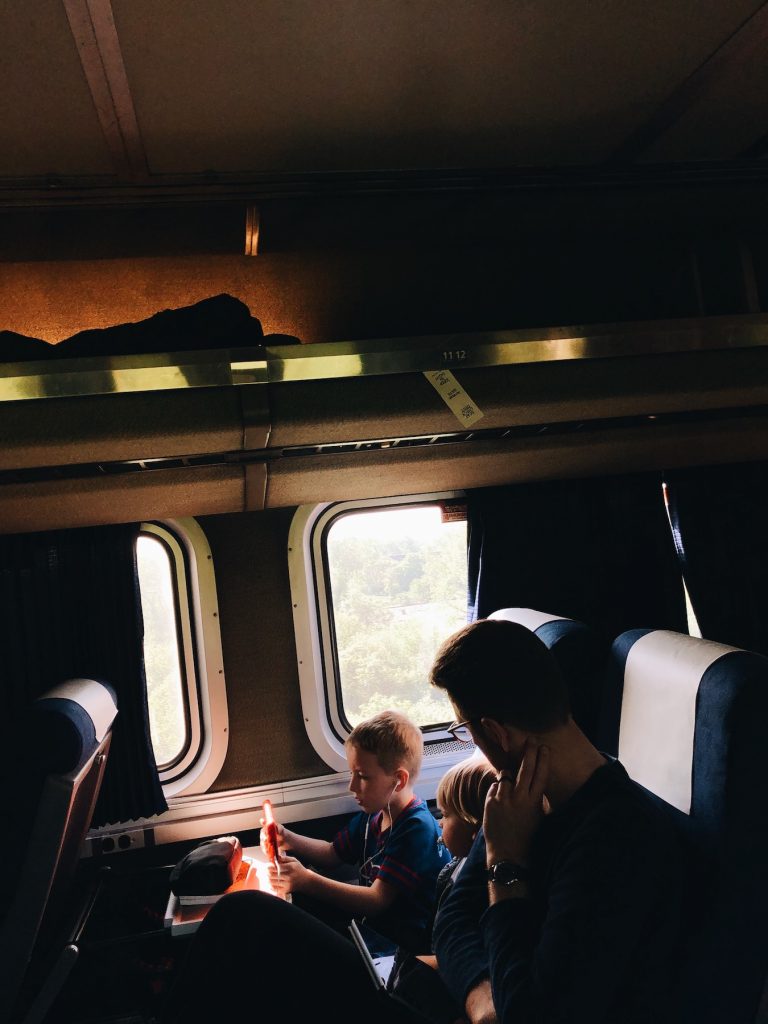
Boarding and departure happens quickly. Unlike airlines who check each passenger before they boarding the plane, train tickets are checked once the train is moving. There are no last calls over the loudspeakers, and the train won’t wait for you. We’ll say it again: arrive early for your train.
Leaving the train station for the first time is a thrilling experience. Chicago’s Union Station is partially underground, so the train slowly creeped forward out of the station, out of the dark tunnel, out of the city. All aboard!
On the train
Tickets
After the train is moving, attendants move from car to car to check tickets. E-tickets are scanned from your phone (PDF via email or on the Amtrak app) and paper tickets are collected (keep the stub for your travel journal!).
Speaking of electronic devices, most Amtrak trains have free onboard WiFi. We found the best signal in the lounge car, and losing connection during our delay was no big deal; we just used our phone’s data plan. No airplane mode necessary.
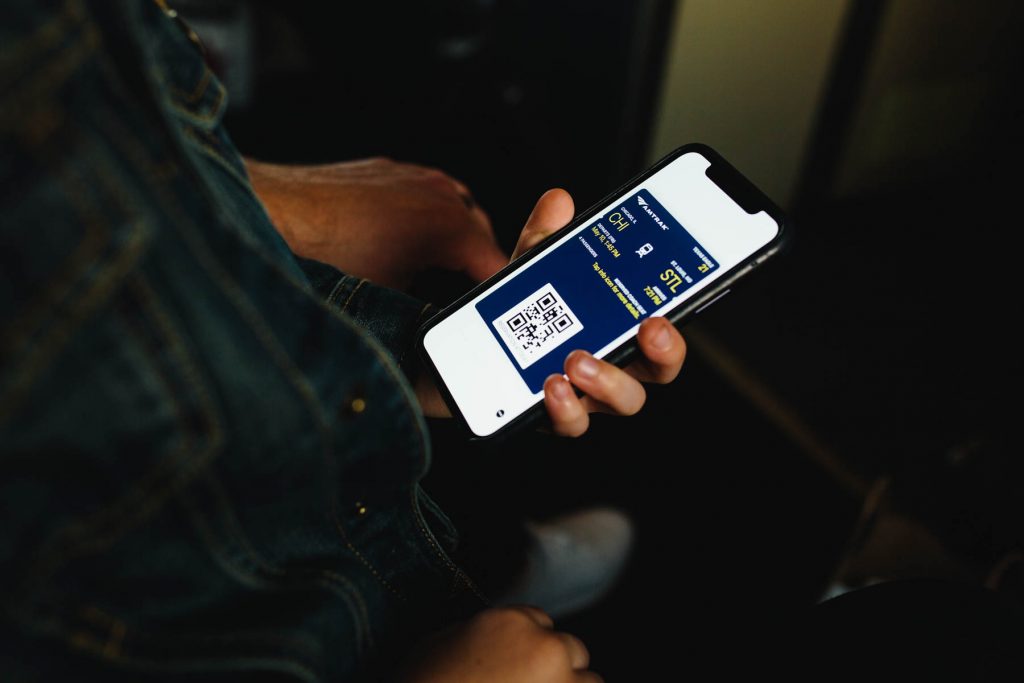
Bathrooms
Bathrooms are as you’d expect: small, grubby, and unfancy. They’re nearly identical to the bathrooms you’d find on an airplane, except there are more of them (about 4 per train car) and most have a fold-up diaper changing table, albeit small. Most cars have single-person bathrooms and one or two that are double size or handicap accessible. Those are big enough to use with your kid if they need help using the toilets or are apprehensive (read: freaked out) about peeing aboard a train.
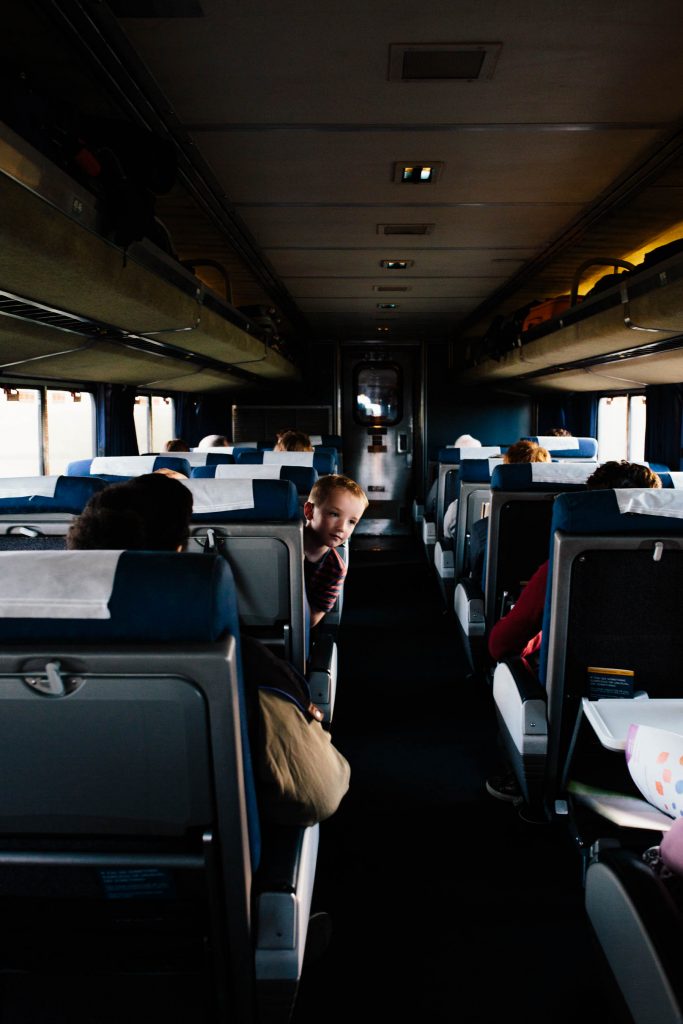
Coach, dining, and lounge cars
Each train line boasts various amenities and train cars. The most tripped-out trains pull sleeper cars, bi-level coach cars, dining and lounge car, and viewer car in addition to the locomotive and baggage car.
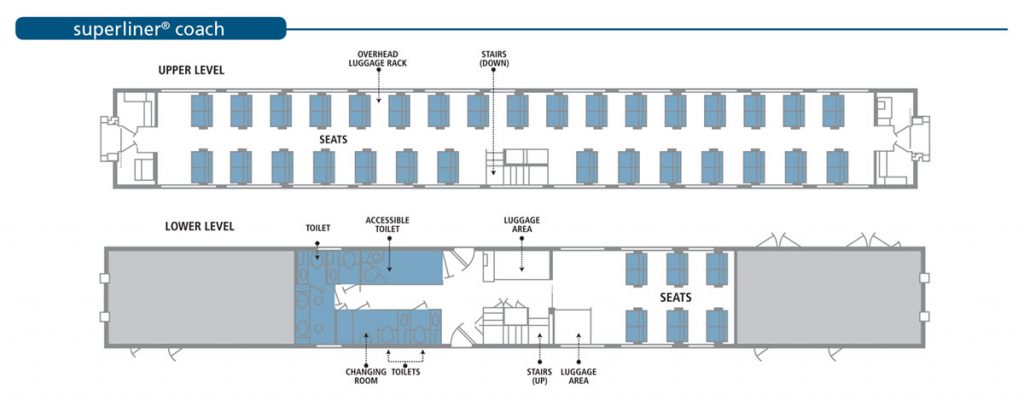
The most common Superliner bi-level coach cars have handicap accessible seating, bathrooms, luggage storage, and coach seats. The upper level contains 62 seats (2 on either side of the aisle) that feel incredibly spacious and roomy. Major points for train travel.
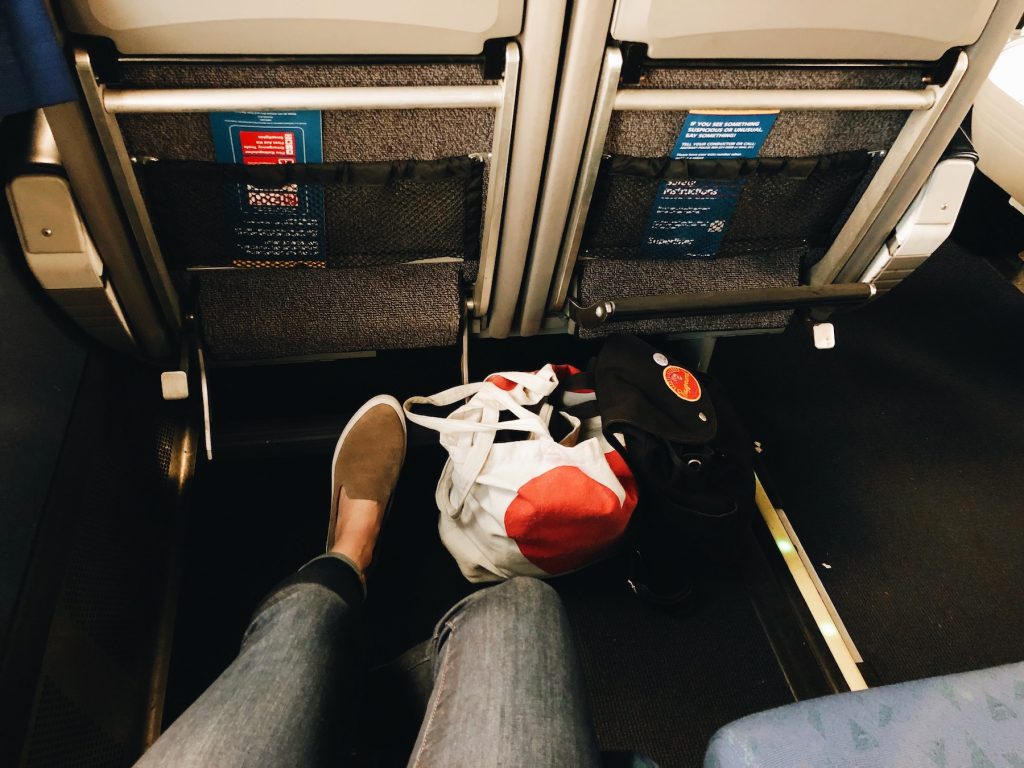
Fold-out tray tables at each seat are perfect for holding activity books and fruit snacks, overhead reading lights allow you to read something after the kids fall asleep, and fold-out leg rests paired with partially-reclining seats mean you might even get a catnap if you’re lucky. Traveling with two children means there’s always someone crawling on your lap, rummaging through the bags, or asking for a snack and the coach seats accommodate all that activity without feeling overly cramped.
The train rides smoothly and it’s slow enough for walking the aisles and moving from car to car. The lounge car is even more spacious than coach. With loveseat-like seats arranged in groups, plenty of outlets, and lots of natural light from the windows lining the train car, it’s a welcome place to hang out and there’s plenty to see out the window!
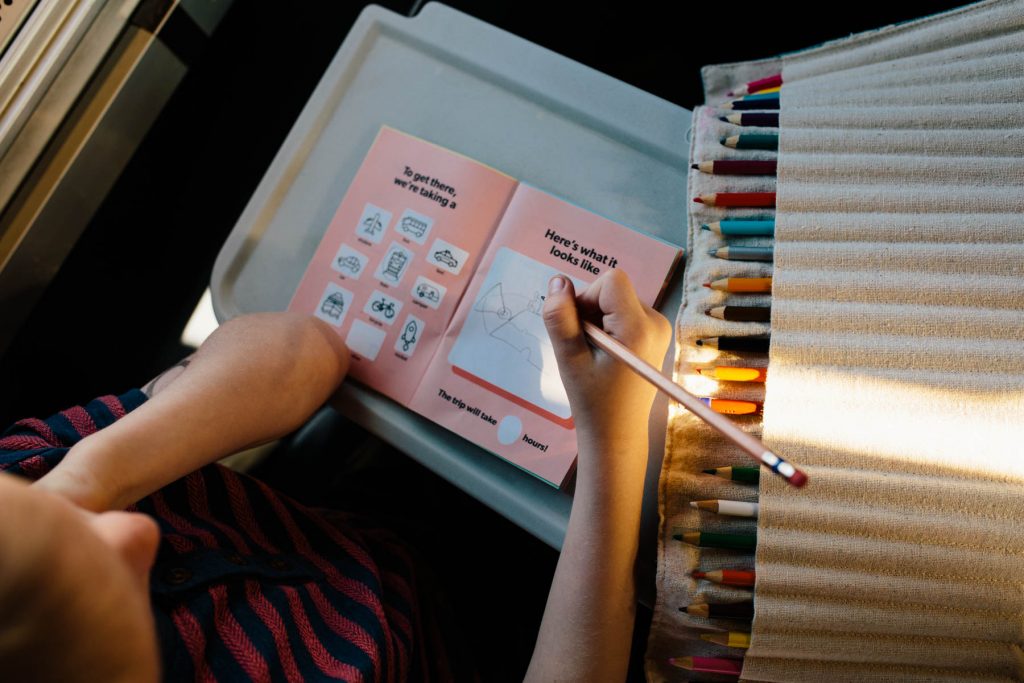
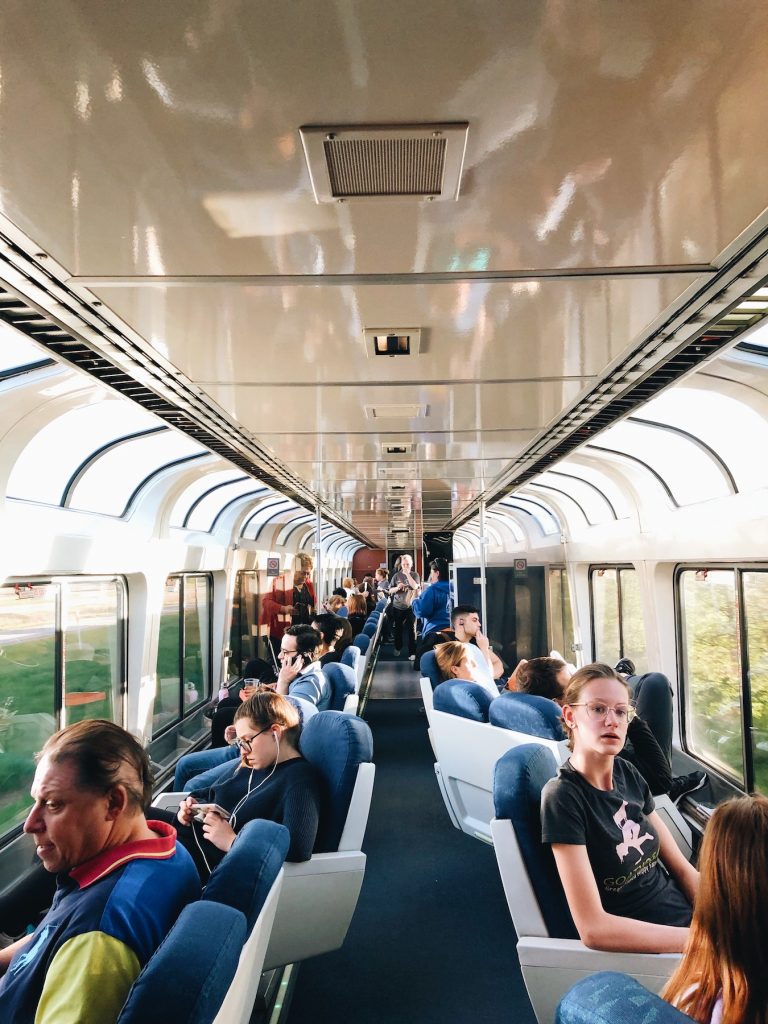
The cafe is located on the lower level of the lounge car along with a few tables and booth-style seating. Grab your food or bring your own snacks or playing cards to the tables. The windows are nice and big on the lower level too, making it a pleasant place to hang out.
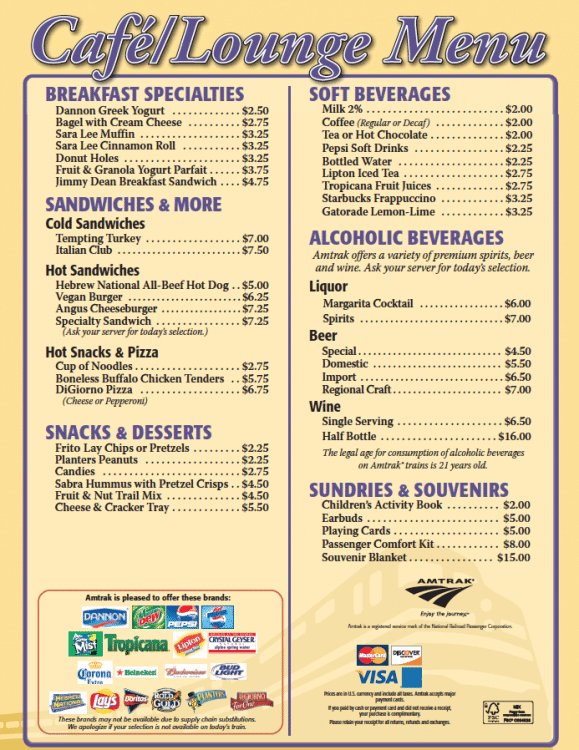
Food at the cafe is your average American junk food. Hamburgers, hot dogs, pizza, bags of chips, granola and candy bars, soda, ice cream treats, coffee, prepackaged hummus and pretzels, cinnamon rolls, and instant ramen all made an appearance on the menu—the kids will be in heaven. Prices seem reasonable ($5 hot dogs, $3.75 cinnamon rolls, $7.25 hamburgers) until you receive the food and realize you could have paid $3.75 for a croissant at the artisan bakery on your block that doesn’t come packaged in cellophane. Underwhelming, really.
If you want the full Amtrak experience, eat a meal in the dining car with a side of sentimentality. The car is quaint and picturesque and feels like a step back in time, right down to the monogramed paper placemats. But the food? Another story.
Pre-prepared, tasteless, and under-seasoned, Amtrak food won’t be your best meal of the trip. It’s overpriced too; our kids ordered a hot dog and macaroni and cheese which looked suspiciously like the stuff from the blue Kraft box but cost $7.50 instead. The experience of eating on the train will probably be exciting for the kids, but the food isn’t anything to brag about. As soon as Amtrak signs a contract with Shake Shack, we’ll be on board.
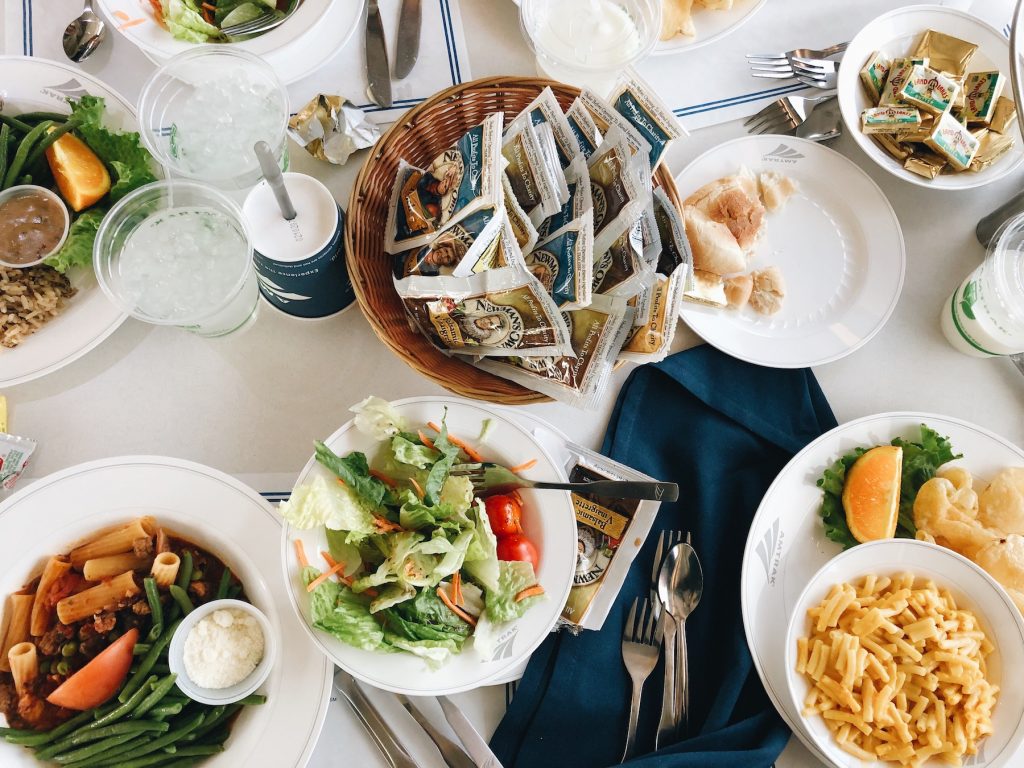
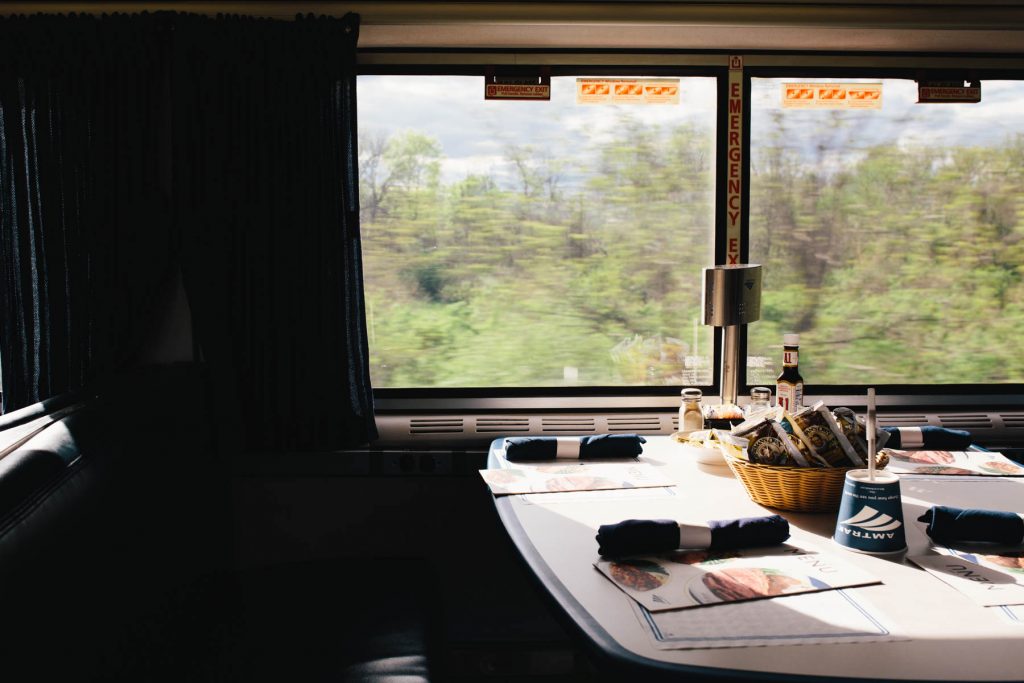
Sleeper cars are available on long distance trains, with foldable beds and personal storages space. We didn’t book one or get a chance to see inside; find out all the info you need to know on Amtrak’s website.
Exiting the train
Listening for your stop
As the train nears a station, an announcement is made alerting passengers which stop the train is approaching, which car doors will open, how long the stop will be, and other information about checked luggage and disembarking.
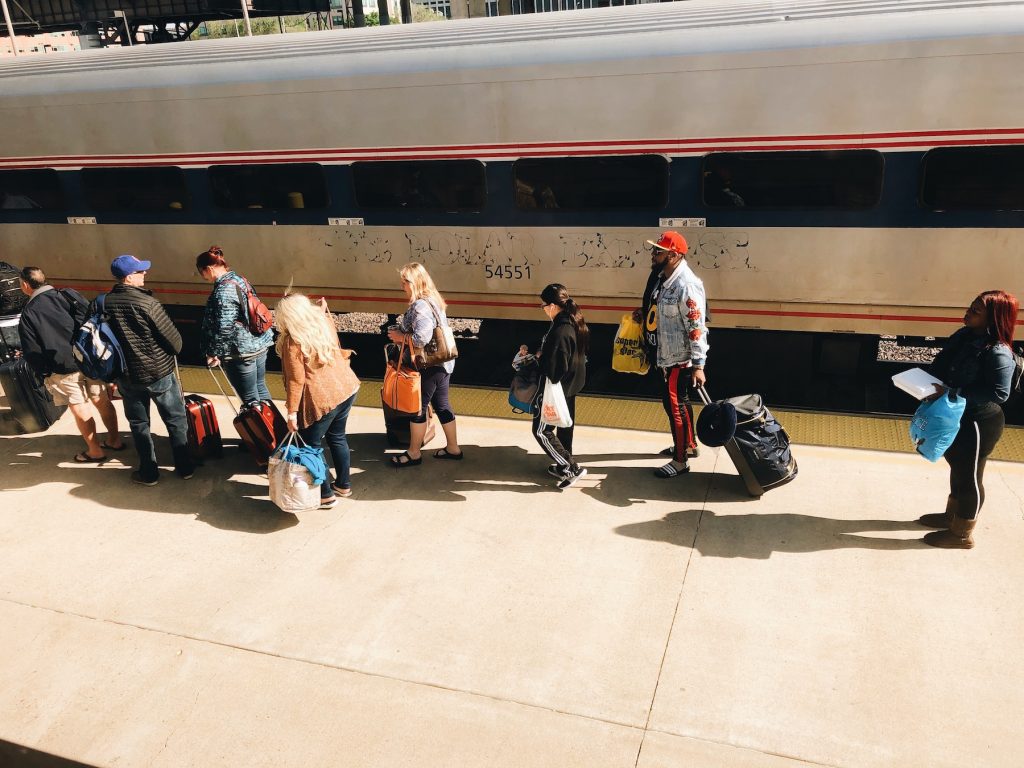
Stops at smaller cities and stations are very quick, and passengers are expected to gather their items and proceed to the lower level as soon as the announcement is made to be ready to get off. Some stops are less than 5 minutes long. Checked baggage services are often not available at these stations either, so check your train line for its specific luggage policy.
A few stations were announced to be “smoke breaks” and passengers were encouraged to get off the train if needed but asked to stay nearby. These stations are identifiable on the train schedule as the stops that have a different arrival and departure time. Our train was delayed by two hours the entire trip and breaks were still offered but were no longer than 15 minutes each time—not quite enough time to hop off and grab a snack or a coffee.
At larger cities and stations, the train stops for a longer period of time to allow passengers to pick up checked luggage and new passengers to board. Crews often switch at these stations as well.
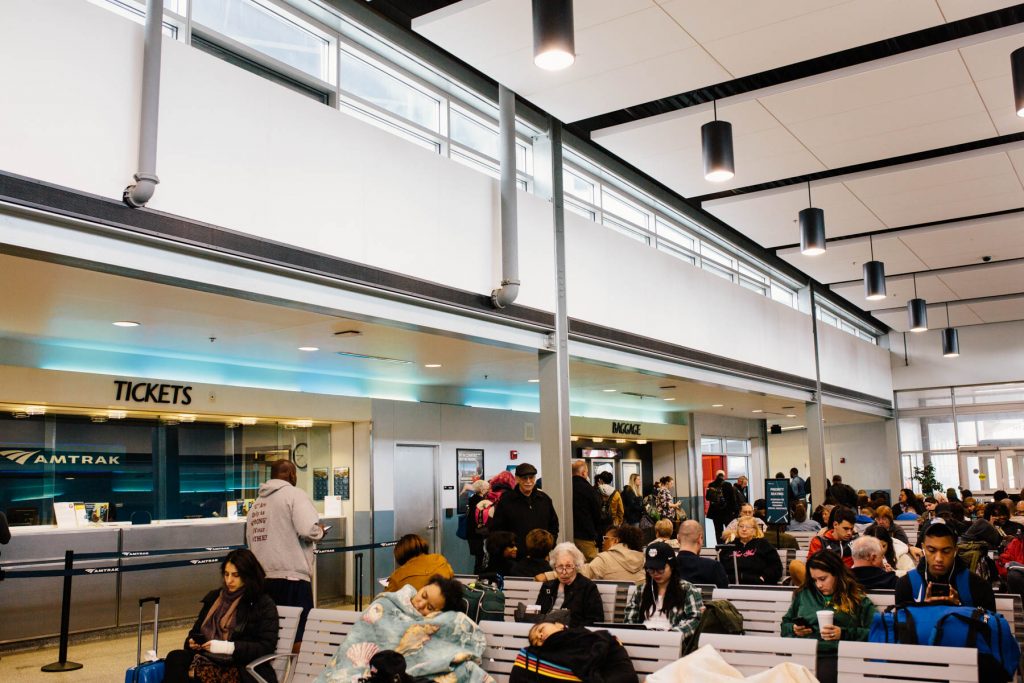
Delays
Amtrak train delays are well documented, universally bemoaned, and, if this even makes sense, pretty reliable. Yes, delays are reliable enough that you should just build them into your trip. Here’s why:
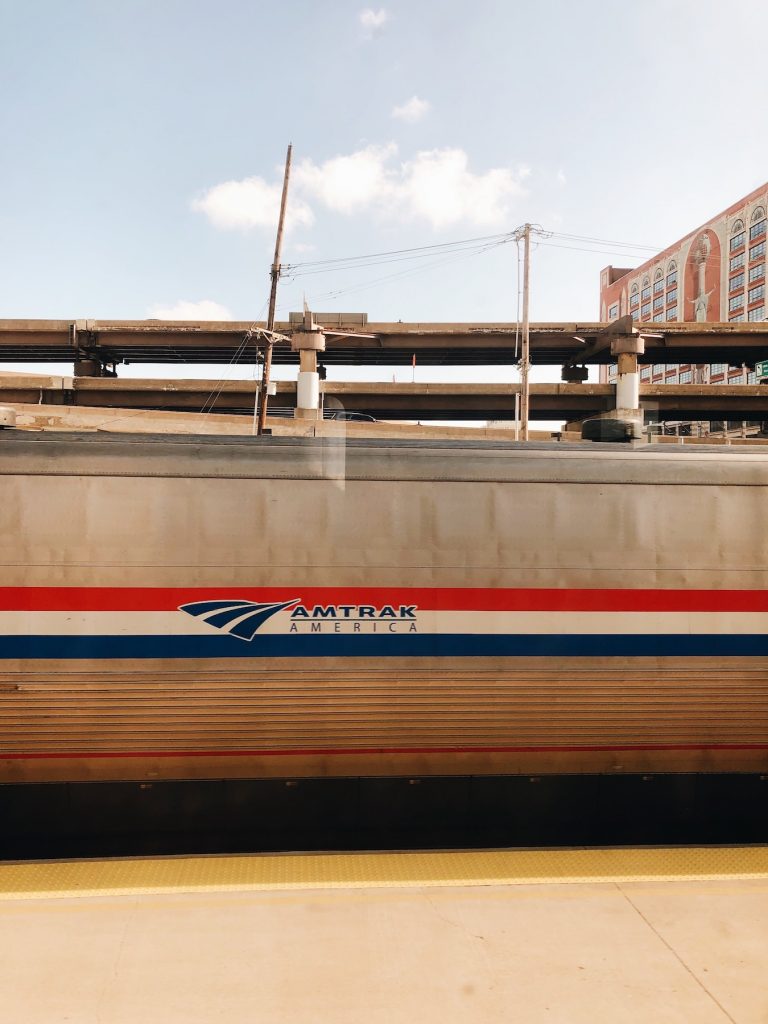
- Amtrak runs its trains on mostly rented track. The company owns the trains it operates, but rents the track from large freight rail companies like BNSF or Union Pacific. In fact, 97% of the track Amtrak uses is rented. But what does that mean for schedule? If an Amtrak train and a BNSF freight train happen to need the same BNSF track at the same time, Amtrak is going to have to wait its turn.
- Giving right-of-way to a freight train doesn’t seem like a big time-waster, but keep in mind that most Amtrak routes are very long—spanning the entire continental states. Multiple small delays over hundreds or thousands of miles have the domino effect—they add up.
- Amtrak is old. The oldest locomotive still in operation is 31 years old, and the average Amtrak passenger coach in operation is 26 years old (the oldest is 63).
- At the risk of getting too nerdy and historical on you, Amtrak was born out of the failure of private rail companies in the 60s. Auto and airplane travel were becoming more and more accessible, and rail companies were going bankrupt. The Rail Passenger Service Act of 1970 was passed because the use of rail to transport cargo was still incredibly important (and still is to this day). RPSA essentially made the American Government the only investor in Amtrak and hoped to see the company become profitable on its own (spoiler alert: it didn’t). All this means that there’s little motivation to improve infrastructure for the sake of fixing train delays. Private companies who own the track don’t care because delays are less of a problem (they don’t carry passengers, and when they meet a passenger train, they get to go first anyway), Amtrak doesn’t own the track so they can’t do anything about it even if they wanted to, and the same is true with the American government. Old and outdated infrastructure leads to delays.
It all sounds pretty dismal, but Amtrak delays are simply expected. The Bureau of Transportation Statistics reports that Amtrak trains were on time just 80% of the time in 2016. Regionally, Amtrak services the East Coast United States most of the time, and operates on-time most often there. In other parts of the country, however, on-time rates can be much lower.
Our train experienced a mechanical issue with one of its locomotives when we were just 20 minutes outside of Chicago. We hadn’t even reached the first station less than 50 miles away when we had to pull off on a side track and wait for two hours while the engine was inspected, found to be inoperable for our trip, detached, and left behind. We were completely powerless to do anything so we made the best of it and passed the time eating snacks from the cafe car. We were hopeful that the train could make up lost time like some airlines are able to do when delays happen, but no such luck.

We arrived at our destination two hours behind schedule. The return trip from St. Louis back to Chicago was also delayed by 45 minutes. If you expect the delays, check your train status regularly, and build them into your travel schedule they’re not quite as exasperating as they sound.
The Takeaways (TL;DR)
Here’s the boiled-down version of our family’s take on train travel.
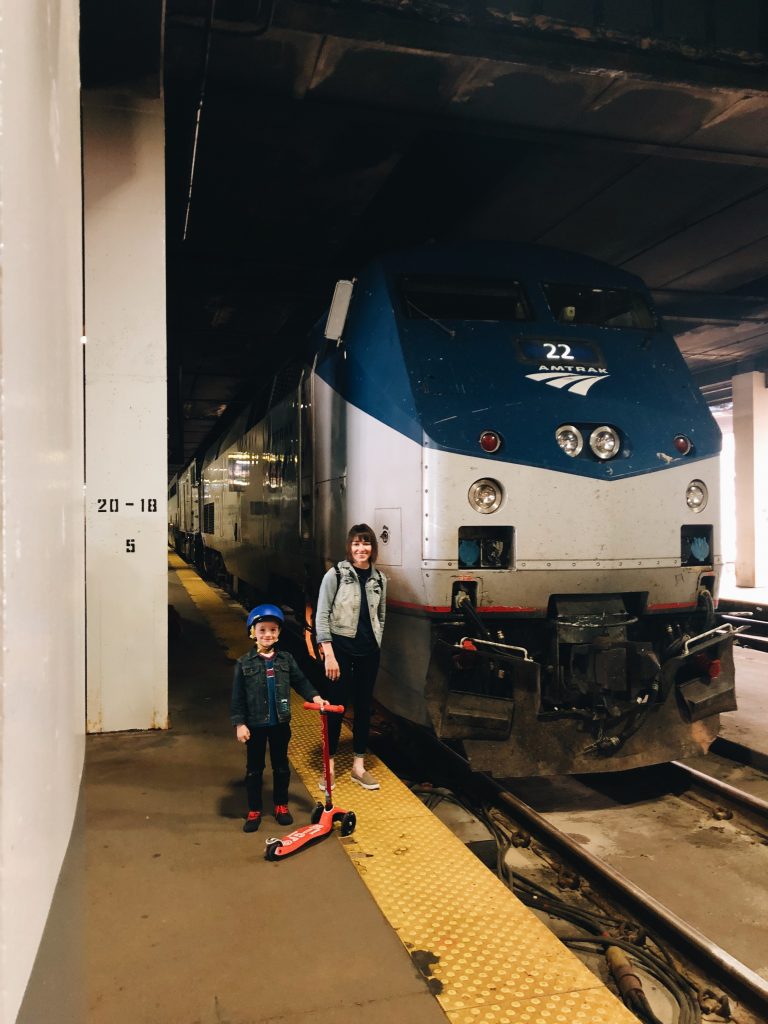
Do we recommend it? Sure, for shorter trips. We probably won’t book a train trip from Chicago to California anytime soon.
Does it save money? It depends. For longer train trips, you can purchase budget airfare for comparable prices, especially if you take into consideration the overpriced food served aboard Amtrak. Short trip tickets are hart to beat price-wise, and are even cheaper than a rental car if you book early. If you already own a car? That’s your cheapest option for a short trip.
Is it fun? We think so! The slower pace, watching the world pass by out the window, and geeking out about train facts make it a real adventure. By the time we arrived at our final destination we felt like our adventure had already begun.
Is it convenient? Depends what you value. We could have driven ourselves to St. Louis in the same amount of time (less time, actually, considering the 2-hour delay), but we wouldn’t have been able to get up and walk around, and we aren’t fond of the stress of highway driving. For us, it was more convenient to let the train engineer do the driving.
Is it luxurious? Not at all. The trains are old and grubby and the food is sub-par. We’ll be among the first to back a luxury passenger train startup.
Is it quaint? Absolutely. Feels a bit like a step back in time and almost forces you to take a slower pace. We weren’t mad about that.
What essentials should I take with me? Other than the typical things for travel, bring food. Bring your own grub so you don’t have to waste your money in the dining or cafe cars. You’ll have plenty of space for a small to medium size insulated bag filled with picnic or snack foods and you’ll thank us later.
Is train travel a good choice for my family? That depends entirely on what you value and prioritize. Here’s our take on how taking the train stacks up against driving a rental car or taking a plane.
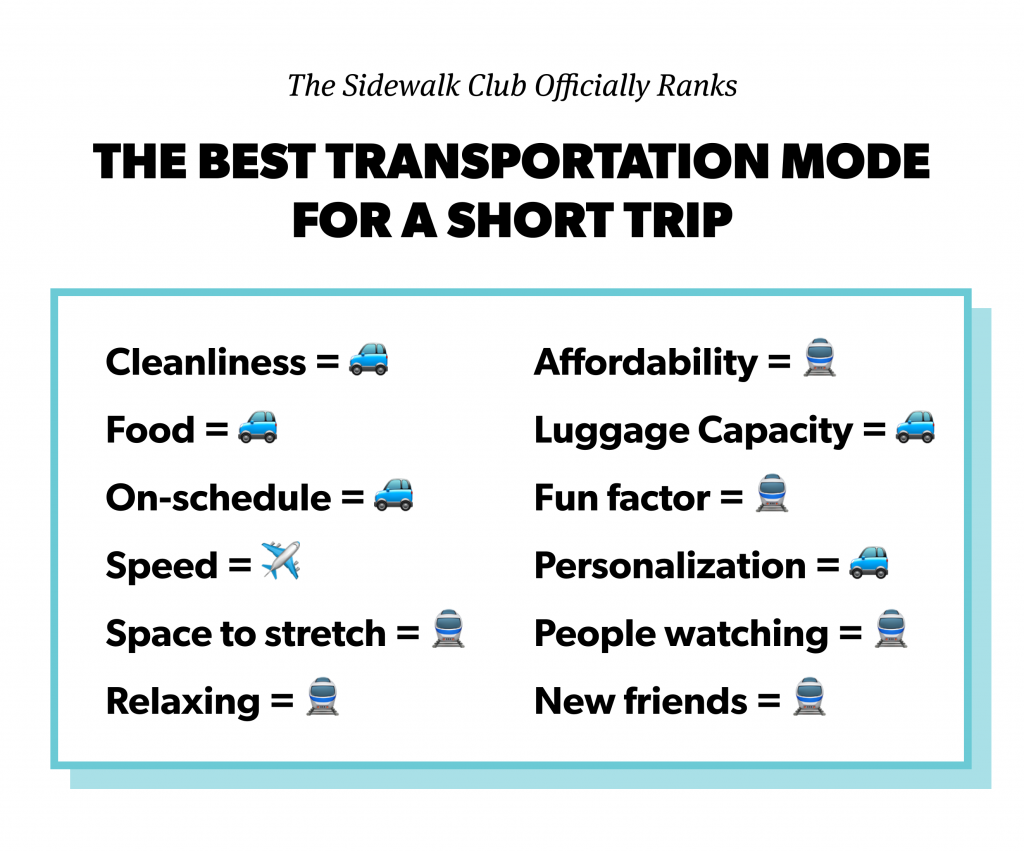
Next time you’re planning a vacation, remember that train travel is a practical, eco-friendly, and often economical alternative. It’s not glamorous, but it’s an adventure, and your kids will probably talk about it for months after! We hope this handbook helps you feel equipped to make a smart decision for your family and answers some of the burning questions you might have about rail travel. Bon voyage! 🚆
Amtrak didn’t pay us to go on the trip or write this article about our experiences; this information is meant to be purely informational and educational. We can’t be held responsible for Amtrak changing the rules or guidelines, so please verify everything we say with an Amtrak representative or Amtrak.com. Lastly, we hope your experience turns out as nicely as ours did, but if not, we’re really sorry and please don’t hold it against us. More legal info here, but that covers the basics.


